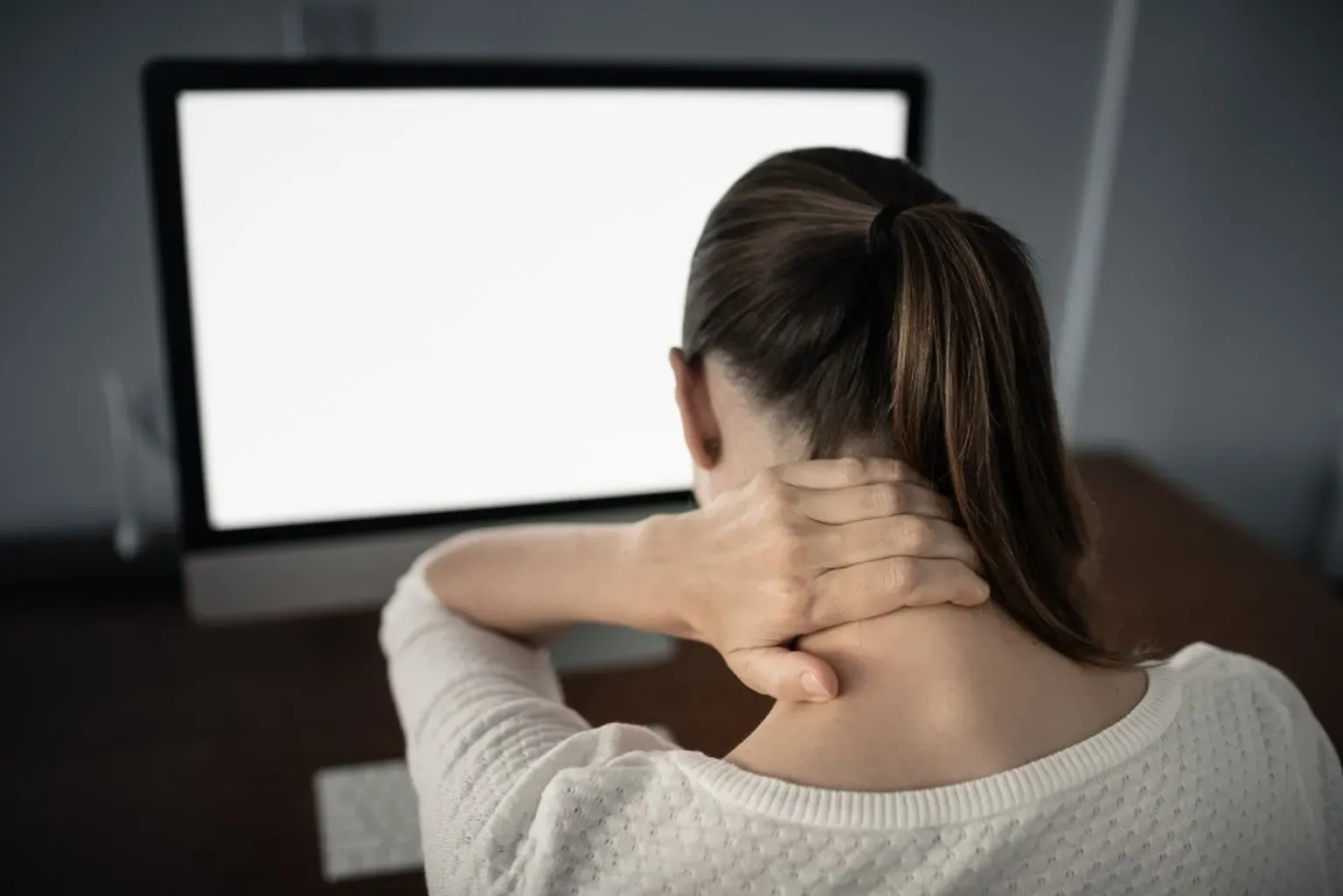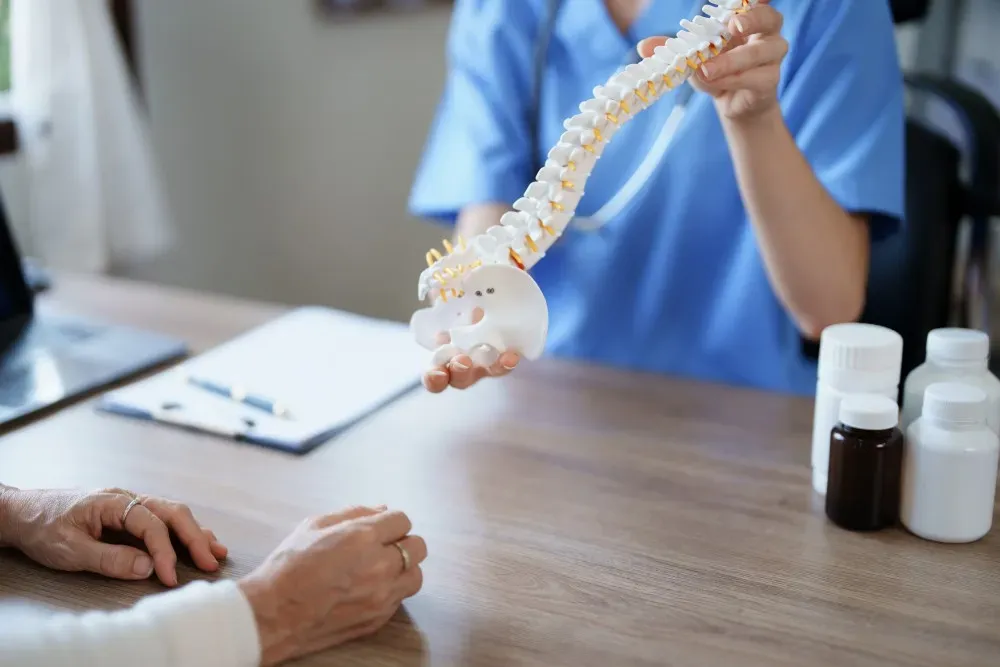Neurosurgery & Orthopedic Surgeons in Jacksonville

What is a Bulging Disc?
Back pain is a pervasive medical condition shared by millions of Americans — experts predict that 80% of people will experience back pain at some point in their lives. One of the most common sources of persistent back pain is a bulging disc in the spine.
Back pain is a pervasive medical condition shared by millions of Americans — experts predict that 80% of people will experience back pain at some point in their lives. One of the most common sources of persistent back pain is a bulging disc in the spine.
We invite you to read our comprehensive guide about this spinal condition and learn more about the causes, symptoms and treatment options available to you.
THE STRUCTURE OF THE SPINE
The spinal column has 33 vertebrae that make up the cervical, thoracic, lumbar, sacral and coccygeal regions. Between each vertebrae are spinal discs, which help the spine in several ways. They act as shock-absorbing cushions for vertebrae, and they also aid in spine movement and flexibility. The discs fit perfectly between vertebrae to allow enough room for spinal nerves to exit the spinal canal and travel to the limbs.
Spinal discs have 2 parts:
- An outer section made of several layers of tough, fibrous cartilage (called the annulus)
- An inner section made of a jelly-like cartilage (called the nucleus)
When injuries occur to spinal discs at the lumbar, thoracic or neck regions, they can cause back pain, along with other complications.
TERMS EXPLAINED: BULGING DISC VS. HERNIATED DISC
While these 2 terms are often used interchangeably, they are different spinal injuries. Let’s look at the key differentiating factors.
A bulging disc (also called a protruding disc) develops when damage occurs to the tough, fibrous outer layers of cartilage. As we age, the cartilage weakens, dehydrates, stiffens and begins to bulge out from its space between spinal vertebrae. Many protruding discs are painless and develop over the course of many years as part of the aging process. The injury may cause pain if the disc bulges out enough to inflame or irritate nearby spinal nerves.
A herniated disc (also called a ruptured or slipped disc) is a more severe condition than a protruding disc. A disc herniates when a crack develops in the tough outer cartilage and the nucleus fluid bulges out. Herniated discs are more likely to be caused by an acute trauma (like a car accident) that places unexpected pressure on the spine. They are also more likely to cause pain, numbness and sciatica because the damaged disc may inflame or compress the nerve roots in the spine.
CAUSES AND RISK FACTORS
Bulging spinal discs is a common condition for both younger and older people, but it’s more common in older people. Age is the biggest risk factor for developing a protruding disc due to normal wear and tear from the aging process. Other common causes and risk factors include:
- Improper lifting and bending techniques that use the back muscles instead of leg and core muscles
- Accumulated trauma from many years of poor posture (like slouching or bending forward)
- Obesity
- Genetics
- Acute trauma from a fall or car accident
SYMPTOMS AND WHEN TO SEEK MEDICAL CARE
In many mild to moderate cases, protruding discs have no symptoms at all. Sometimes, a diagnosis is made from an incidental finding on a MRI scan. A mild to moderate injury may persist for several years without causing pain or loss of function. If a protruding disc is significant or worsening, symptoms may include the following:
- Back pain, especially while sitting or lifting heavy loads
- Leg pain, tingling or pins and needles feeling
- Cramping
- Spasms
- Muscle weakness
- Numbness
- Head, neck or shoulder pain (from a protruding disc in the neck)
- Sciatica
Protruding discs that have worsened to the point of herniation or rupture may cause severe symptoms that require immediate medical care. Contact a medical provider if you experience pain or numbness that affects your ability to function or walk, or changes in your bowel and bladder function. These could be signs of nerve compression that requires emergency surgery before it becomes life-threatening.
Once you seek medical care, a MRI or CT scan will be taken to detect protruding discs.
CONSERVATIVE TREATMENT OPTIONS
The first course of action for a disc injury should be pain management, therapy and exercises. By following doctor’s orders for the above treatments, you should start healing within a few weeks. Know that the process is long and requires strict adherence to exercises and therapies that will help you stabilize and strengthen your back muscles. Your injury will be vulnerable for at least 6 weeks once treatment starts, and failure to comply with treatment may lead to a recurring injury or worsening of your existing injury.
- Proper positioning. Use of back braces or back taping to hold your spine in place and let the injury begin to heal. Training and instruction on how to sit and stand in proper, safe positions that support the spine.
- Pain management. Use of painkillers like NSAIDs (ibuprofen) or acetaminophen to ease pain and help you carry on your daily activities.
- Therapies. Use of therapies with the goal of reducing inflammation. Therapies may include a combination of hot and cold
- Exercises. Training in exercises that strengthen the lower abdominal and back muscles that stabilize and support your spine. A strong core helps you maintain proper sitting, standing and lifting positions. Additional training in exercises that improve muscle weakness, endurance and range of motion.
The goal of treatment is to keep your back and supporting muscles strong to prevent recurring injury, and to prevent a protruding disc from rupturing. Even after your injury heals, you should continue to practice core, back and leg strengthening exercises at home. Strong stabilizing muscles will support your spine for years to come.
WHEN TO CONSIDER MINIMALLY INVASIVE SURGERY
If you experience severe pain, nerve compression, failure to relieve pain through conservative treatment, or loss of function and quality of life due to a bulging or herniated disc, surgery may be the next step in your treatment plan.
Lumbar decompression is a minimally invasive procedure that takes pressure off a pinched nerve to ease back and leg pain. If non-surgical treatment options aren’t effective for you, you’ll be evaluated for surgery based on your injury history, symptoms and MRI results.
CONTACT INTEGRITY SPINE AND ORTHOPEDICS IF YOU HAVE BACK PAIN
At Integrity Spine and Orthopedics, we specialize in spine and orthopedic care. We offer several services for our patients with back conditions, including general orthopedic care, minimally invasive lumbar decompression and pain management.
Please call us today at 904-456-0017 to request an appointment or receive a free MRI review.




